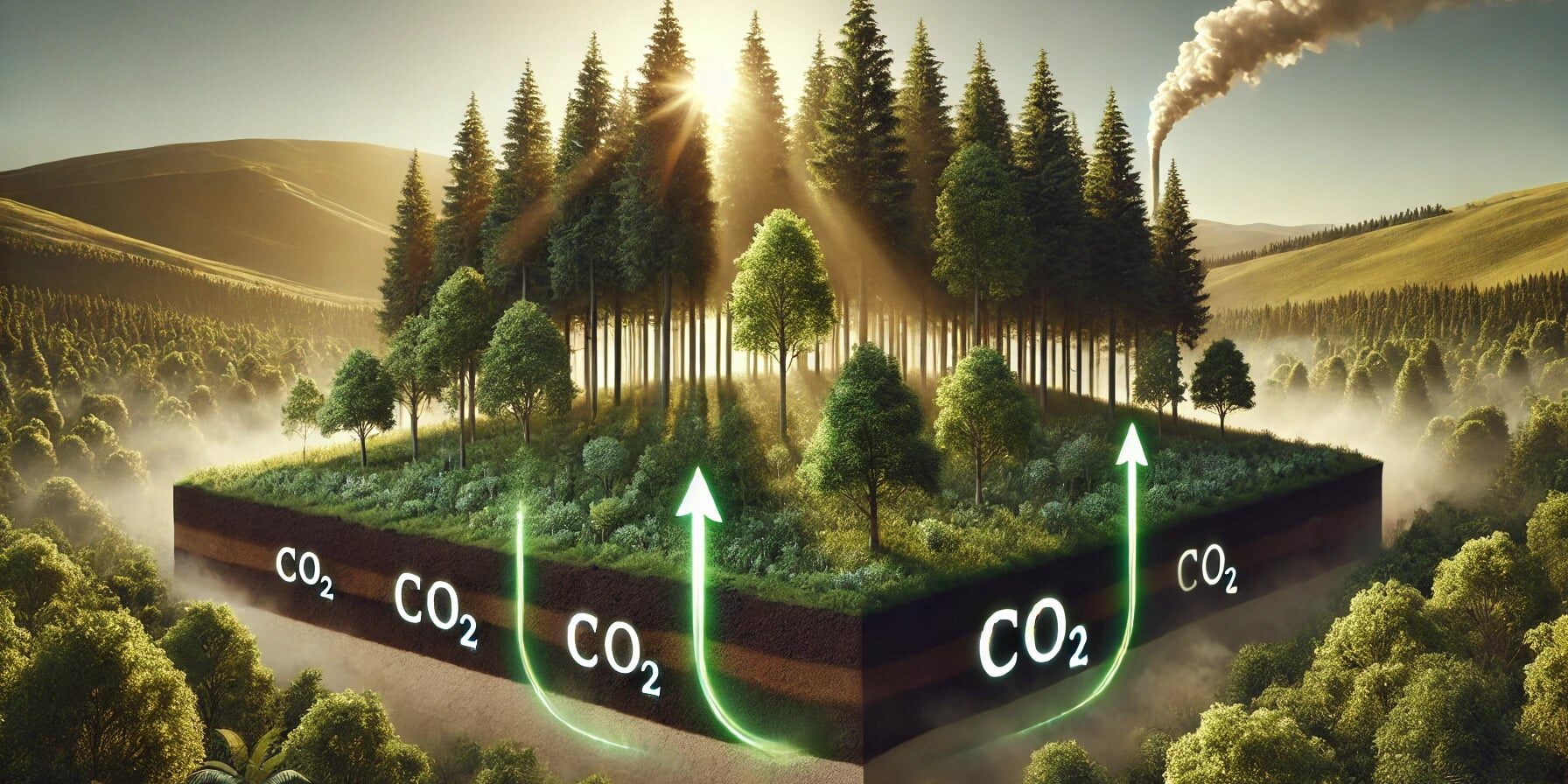Carbon sequestration is the process of capturing and storing atmospheric carbon dioxide (CO₂) to mitigate or defer climate change. The goal is to stabilize carbon in solid or dissolved forms so that it doesn’t contribute to the greenhouse effect and global warming. Here are the main types and methods of carbon sequestration:
Types of Carbon Sequestration
- Biological Carbon Sequestration:
- Forests and Vegetation: Trees and plants absorb CO₂ during photosynthesis and store it as biomass. Forests, grasslands, and wetlands are significant carbon sinks.
- Soil: Carbon is stored in soil as organic matter through the decomposition of plant and animal material. Practices like no-till farming and cover cropping can enhance soil carbon storage[1].
- Oceans: Oceans absorb about 25% of CO₂ emissions from human activities annually. Marine plants like phytoplankton and seaweed also play a role in sequestering carbon[1].
- Geological Carbon Sequestration:
- Underground Storage: CO₂ is captured from industrial sources and injected into underground geological formations, such as depleted oil and gas fields or deep saline aquifers. This method is known as carbon capture and storage (CCS)[2].
- Mineralization: CO₂ reacts with naturally occurring minerals to form stable carbonates, effectively locking away carbon for thousands to millions of years[2].
Methods of Carbon Sequestration
- Afforestation and Reforestation:
- Planting new forests (afforestation) or restoring degraded forests (reforestation) can significantly increase carbon storage in biomass and soils[1].
- Soil Management Practices:
- Techniques such as no-till farming, cover cropping, and agroforestry enhance soil organic carbon levels and improve soil health[1].
- Biochar:
- Biochar is a stable form of carbon produced by pyrolyzing organic material. When added to soil, it can sequester carbon for hundreds to thousands of years while improving soil fertility[2].
- Carbon Capture and Storage (CCS):
- CCS involves capturing CO₂ emissions from industrial processes and power plants, transporting it, and injecting it into underground geological formations for long-term storage[2].
Benefits of Carbon Sequestration
- Climate Mitigation: Reduces the amount of CO₂ in the atmosphere, helping to mitigate climate change.
- Soil Health: Improves soil structure, fertility, and water retention, benefiting agricultural productivity.
- Biodiversity: Enhances habitats for wildlife through reforestation and improved land management practices.
Challenges and Considerations
- Cost and Technology: Implementing carbon sequestration technologies, especially CCS, can be expensive and technologically challenging[2].
- Monitoring and Verification: Ensuring that sequestered carbon remains stored and does not leak back into the atmosphere requires robust monitoring and verification systems[2].
- Scalability: Scaling up carbon sequestration efforts to make a significant impact on global CO₂ levels is a major challenge[2].
Conclusion
Carbon sequestration is a vital strategy in the fight against climate change. By capturing and storing CO₂ through biological and geological methods, we can reduce atmospheric carbon levels and mitigate the impacts of global warming. Continued research, innovation, and investment in carbon sequestration technologies are essential to achieving long-term climate goals.
[1]: What is Carbon Sequestration and How Does it Work? [2]: Carbon sequestration – Wikipedia
References







